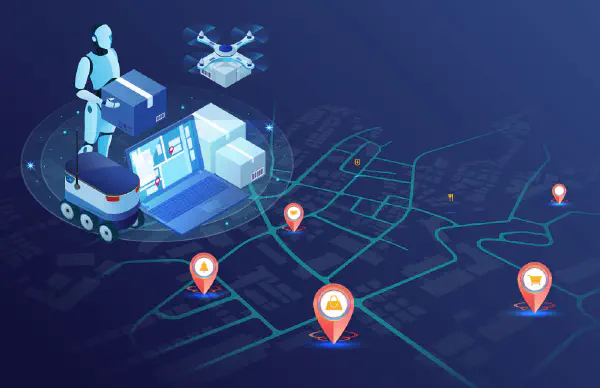
In the ever-evolving field of robotics, the ability to navigate and localize within complex environments is essential. Whether it’s an autonomous car on a busy city street or a warehouse robot efficiently moving packages, accurate positioning and navigation are the keys to success. Image processing techniques have emerged as a powerful tool in this quest, allowing robots to “see” their surroundings, identify landmarks, and determine their precise location.
In this blog, we’ll explore the exciting world of navigation and localization, focusing on how vision-based algorithms, like OpenCV, enable robots to achieve unprecedented accuracy in their movements.
I. The Importance of Navigation and Localization
Before delving into image processing techniques, it’s crucial to understand why navigation and localization are essential for robotic systems. Precise navigation allows robots to perform a wide range of tasks efficiently, from picking and placing objects to safely maneuvering in dynamic environments. Here are a few reasons why these capabilities are crucial:
- Safety
- Autonomous vehicles need to navigate busy streets without causing accidents. Warehouse robots must avoid collisions with humans and other objects.
- Efficiency
- Efficient navigation leads to faster task completion, reducing downtime, and increasing productivity.
- Reliability
- Accurate localization ensures that robots consistently perform their tasks as intended.
- Versatility
- Localization and navigation can be applied in various industries, from healthcare to logistics to agriculture.
This is where image processing shines.
II. Vision-Based Navigation and Localization
Vision-based navigation relies on cameras and image processing techniques to understand and interpret the environment. Robots equipped with cameras can capture images or video feeds and use computer vision algorithms to make sense of their surroundings.
- Image Processing Algorithms
- Feature Detection
- Robots can identify distinct features in their environment, such as edges, corners, or specific patterns. OpenCV, a popular open-source computer vision library, provides tools for feature detection, making it easier for robots to identify key landmarks.
- Simultaneous Localization and Mapping (SLAM)
- SLAM algorithms combine mapping and localization to help robots build a map of their surroundings while simultaneously determining their own position within that map. SLAM is particularly useful for robots operating in unknown or dynamic environments.
- Feature Detection
- Landmark-Based Navigation
- One approach to navigation and localization involves using predefined landmarks or patterns in the environment. Robots capture images, identify these landmarks, and determine their position relative to them. Landmark-based navigation is used in various applications, including indoor navigation, agriculture, and autonomous vehicles.
- Object Recognition
- Robots can be equipped with the ability to recognize objects and use this information for navigation. This is especially useful in environments where objects may serve as landmarks or obstacles. Image processing techniques allow robots to identify objects and make navigation decisions based on this information.
III. Real-World Applications
Vision-based navigation and localization have found applications in a wide range of industries:
- Autonomous Vehicles
- Self-driving cars and drones rely heavily on image processing to navigate roads and airspace. They can detect road signs, other vehicles, and pedestrians, ensuring safe and efficient navigation.
- Agriculture
- Autonomous tractors and drones equipped with cameras can identify crops, pests, and obstacles, optimizing farming operations.
- Logistics and Warehousing
- Robots equipped with cameras and image processing technology are used to pick, place, and transport goods in warehouses, reducing the need for human intervention.
- Healthcare
- Surgical robots use image processing to navigate within the human body during minimally invasive procedures, improving precision and safety.
- Search and Rescue
- Robots equipped with cameras and image processing can navigate disaster-stricken areas, identifying survivors and hazards.
Conclusion
Vision-based navigation and localization represent a paradigm shift in the world of robotics. With the power of image processing, robots can navigate and localize themselves with unprecedented accuracy and versatility. Whether it’s in autonomous vehicles, agriculture, logistics, healthcare, or search and rescue missions, the ability to “see” and understand the environment empowers robots to tackle complex tasks in real-world scenarios. As image processing techniques continue to advance, we can expect even more remarkable applications and innovations in the field of robotics, further transforming the way we interact with our surroundings.